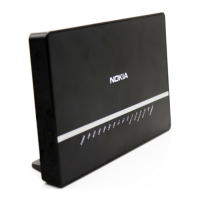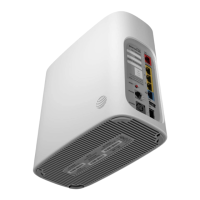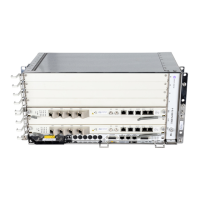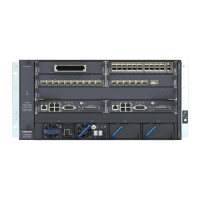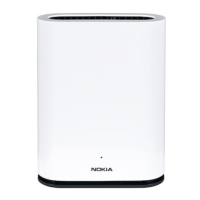FD 100/320Gbps NT and FX NT IHub Services Guide Virtual Private Routed Network Service
Issue: 13 3HH-11985-AAAA-TQZZA 469
7.10.3.2 address
Description This command creates a logical IP routing interface for an Virtual Private Routed Network
(VPRN). Once created, attributes like an IP address and service access point (SAP) can be
associated with the IP interface.
The interface command, under the context of services, is used to create and maintain IP
routing interfaces within VPRN service IDs. The interface command can be executed in the
context of an VPRN service ID. The IP interface created is associated with the service core
network routing instance and default routing table. The typical use for IP interfaces created in
this manner is for subscriber internet access.
Interface names are case sensitive and must be unique within the group of defined IP
interfaces defined for configure router interface and configure service vprn interface (that is,
the network core router instance). Interface names must not be in the dotted decimal notation
of an IP address. For example, the name “1.1.1.1” is not allowed, but “int-1.1.1.1” is allowed.
Show commands for router interfaces use either interface names or the IP addresses. Use
unique IP address values and IP address names to maintain clarity. It could be unclear to the
user if the same IP address and IP address name values are used. Although not
recommended, duplicate interface names can exist in different router instances.
The available IP address space for local subnets and routes is controlled with the configure
router service-prefix command. The service-prefix command administers the allowed
subnets that can be defined on VPRN IP interfaces. It also controls the prefixes that may be
learned or statically defined with the VPRN IP interface as the egress interface. This allows
segmenting the IP address space into configure router and configure service domains.
When a new name is entered, a new logical router interface is created. When an existing
interface name is entered, the user enters the router interfac context for editing and
configuration. By default, there are no default IP interface names defined within the system. All
VPRN IP interfaces must be explicitly defined. Interfaces are created in an enabled state.
The no form of this command removes IP the interface and all the associated configuration.
The interface must be administratively shutdown before issuing the no interface command.
For VPRN services, the IP interface must be shutdown before the SAP on that interface may
be removed. VPRN services do not have the shutdown command in the SAP CLI context.
VPRN service SAPs rely on the interface status to enable and disable them.
Parameters ip-int-name — Specifies the name of the IP interface. Interface names must be unique within
the group of defined IP interfaces for configure router interface and configure service vprn
interface commands. An interface name cannot be in the form of an IP address. Interface
names can be from 1 to 32 alphanumeric characters. If the string contains special characters
(#, $, spaces, etc.), the entire string must be enclosed within double quotes.
If ip-int-name already exists within the service ID, the context will be changed to maintain that
IP interface. If ip-int-name already exists within another service ID or is an IP interface defined
within the configure router commands, an error will occur and context will not be changed to
that IP interface. If ip-int-name does not exist, the interface is created and context is changed
to that interface for further command processing.
tunnel — Keyword that specifies that the interface is of the type gre tunnel.
Item Description
(2 of 2)

